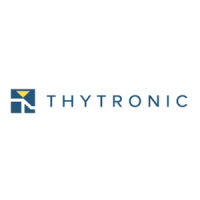
Do you have a question about the Thytronic NA11 and is the answer not in the manual?
Defines document scope, liability, and disclaims legal responsibility for information accuracy.
Highlights critical safety warnings and precautions for installation and use.
Provides definitions for technical terms, abbreviations, and symbols used in the manual.
Describes the relay's application in radial networks and its core functions.
Lists key hardware and operating features of the NA11 protection relay.
Covers mechanical data, insulation, EMC tests, voltage dips, and certifications.
Details auxiliary power supply, phase current, residual current, and binary input circuits.
Describes output relay specifications and block output (logic selectivity).
Outlines local and remote communication ports like RS485 and Ethernet.
Details various protective elements like phase overcurrent, residual overcurrent, and breaker failure.
Explains the basic structure and components of the NA11 relay's hardware.
Details the relay's software architecture, including base software, RTOS, and application software.
Covers metering inputs, signal processing, and the use of measured values.
Specifies rated values and parameters for protective elements like phase overcurrent.
Describes control functions like automatic reclosure and monitoring features.
Lists various calculated measures, harmonic components, and demand measures.
Shows available data for each protection threshold, including start, trip, and blocking states.
Details states of binary inputs acquired downstream of delay timers.
Lists states of functions assigned to binary inputs, including LEDs and logic blocks.
Provides recommendations for storing and handling the protection relays.
Details various mounting options like flush, projecting, rack, and separate operator panel.
Explains how to make electrical connections, including CT inputs and communication ports.
Describes the ThySetter software for relay programming, configuration, and data management.
Explains how to use the front panel buttons and display for settings and reading operations.
Provides a hierarchical view of the relay's menu structure for accessing settings and parameters.
Outlines maintenance procedures, component checks, and the watch-dog circuit function.
Presents mathematical formulas and curves for IEC standard inverse time characteristics.
Provides mathematical formulas and curves for ANSI/IEEE standard inverse time characteristics.
Details mathematical formulas for Rectifier, I-squared-t, and Electromechanical inverse time curves.
Shows the input/output circuits and connection diagrams for traditional and LPCT inputs.
Illustrates the physical interfaces including RS232, RS485, Ethernet, and Thybus ports.
Provides typical connection diagrams for various CT configurations and protection elements.
Shows mechanical dimensions for different mounting types (flush, projecting, rack).
Lists all settable parameters, their units, and available setting ranges for comprehensive configuration.
Details the firmware release history, documentation updates, and communication software versions.
States the product's conformity with EC directives and applied harmonized technical standards.